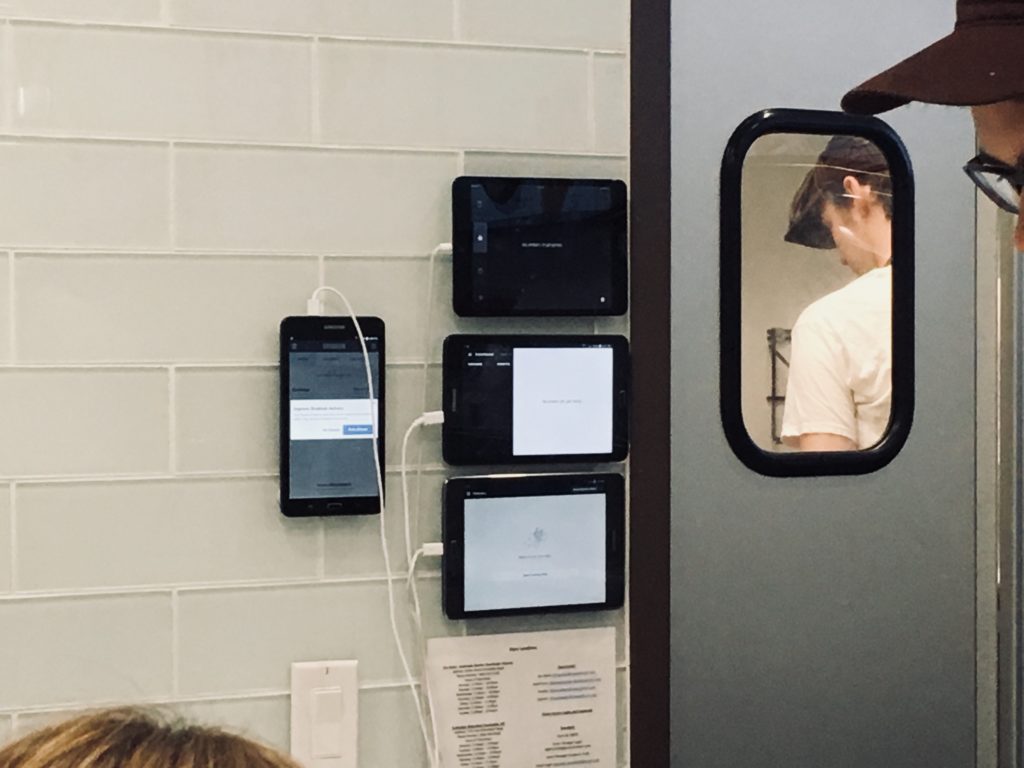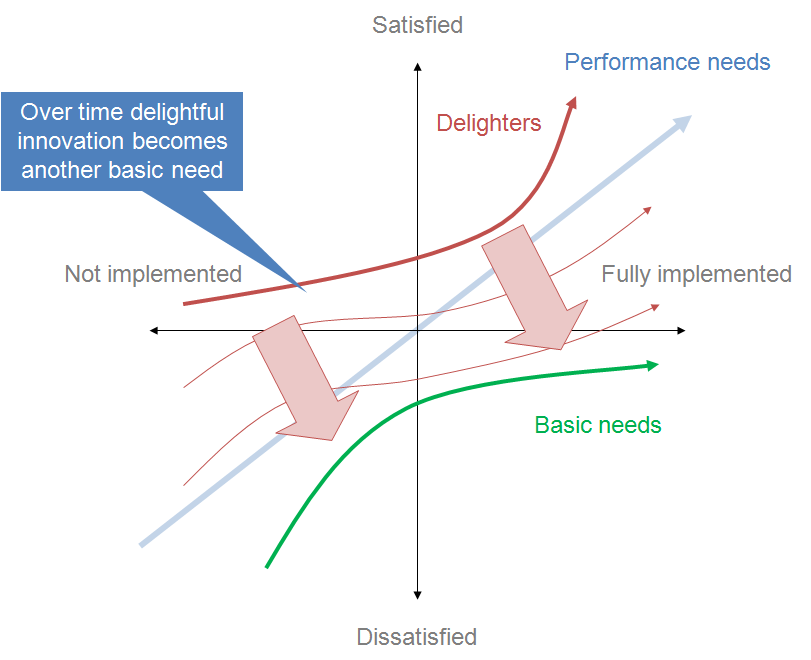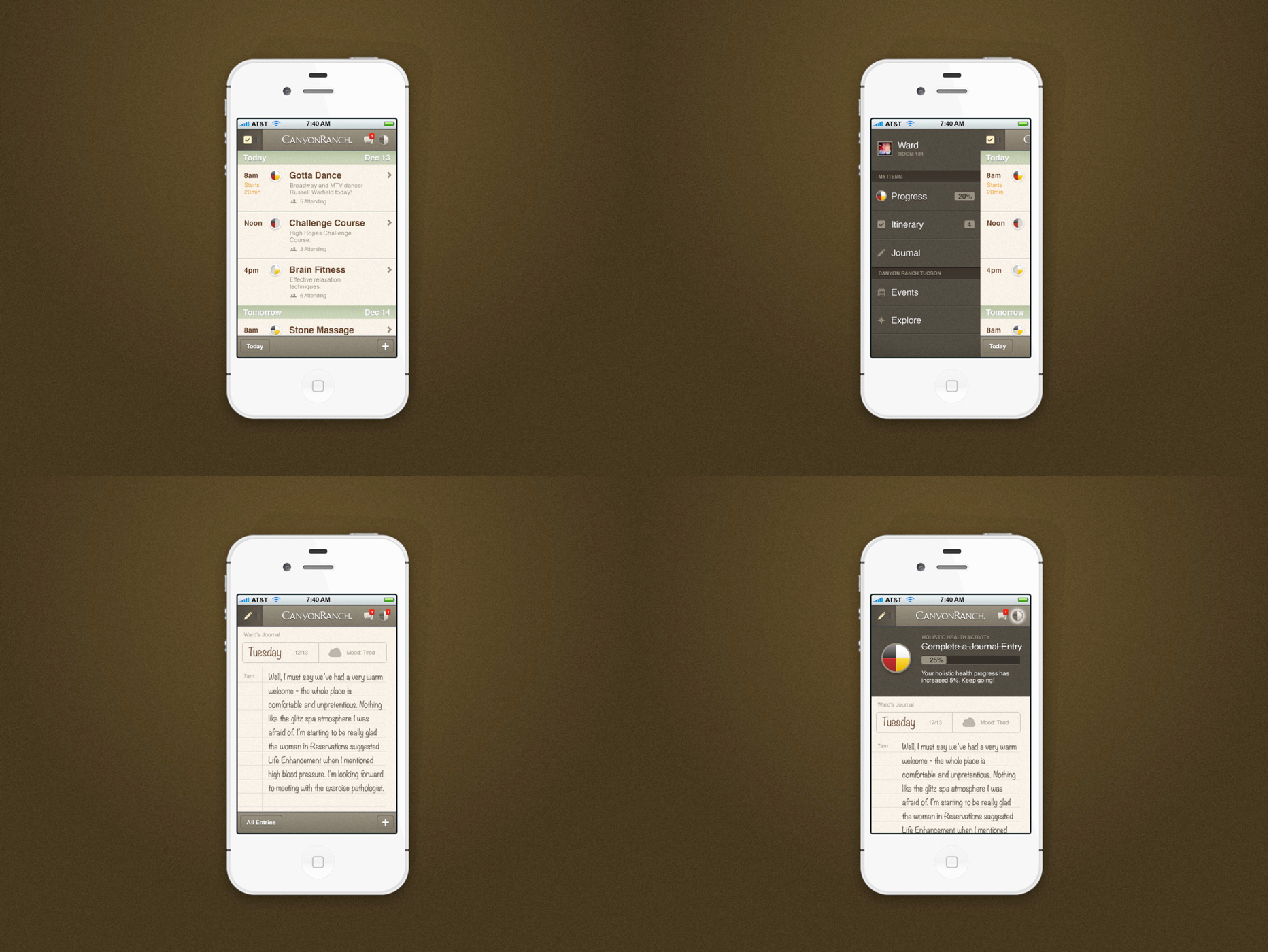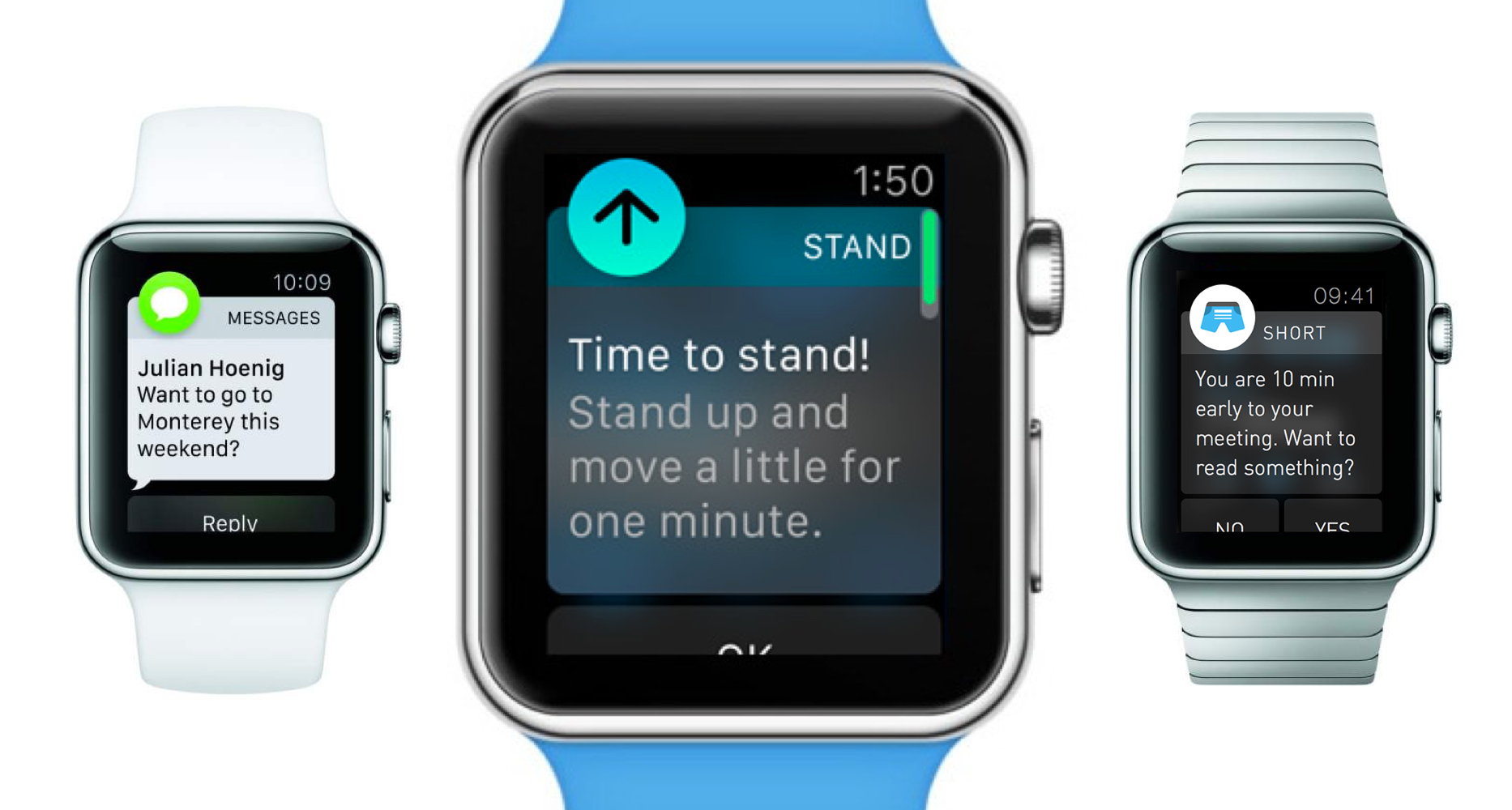3 UX Design Predictions for 2018

2017 was an eventful year for the UI/UX design and tech communities, as well as the world as a whole. From exciting advancements like Amazon Key’s secure delivery service and the iPhone X, to faux pas like Facebook’s ad platform targeting failures and Uber’s ongoing mistakes, there’s one big lesson we can all take away from last year: With great design power comes great responsibility.
Let’s take a look back at how our 2017 design predictions fared, then look ahead at a few trends I expect we’ll see more of in 2018.
2017 UX Design Prediction #3: Brands will be forced to embrace technology or die.
Score: B
This prediction was accurate in the sense that almost every company is adopting a software layer in some way. Whether it’s improving their internal operations or external customer experience, businesses are realizing that people in most market categories expect that they can manage their products and services digitally.
Consider the rise in food delivery services like Grubhub, Uber Eats, and Door Dash. The online delivery market is already worth $20 billion. By 2022, experts predict that number will jump to $55 billion.
Restaurants used to rely on word of mouth and traditional advertising to be found. Plus, very few could offer delivery due to the resources required to build an ordering system, employ drivers, etc. But now with the growing number of off-the-shelf delivery apps, restaurants are discovering a new venue for reaching customers: outsourced delivery services that let them focus on the food without worrying about the overhead.
However, the rise in popularity of software solutions like these comes with its own set of growing pains. For example, walk into any restaurant that uses a food delivery app, and look for the wall of tablets by the register.
Each delivery service operates on its own system, requiring the restaurant owner to keep separate devices on hand so they can process orders. Is it functional and usable? Yes. But is this really the best solution? Hardly.
While I still firmly believe brands will be forced to embrace technology or die, I’m reducing my score to a “B” for this prediction because it’s going to take a lot longer than a year for the market to realize this as well and solve some of the additional problems created by new technology.
2017 UX Design Prediction #2: Usability research and testing will go from being optional to required.
Score: A
I couldn’t go to a client meeting or conference last year without hearing about research and testing – and I couldn’t be happier about it. These have been two key pieces of our design process at Drawbackwards for a while. (We even adjusted our design thinking process to highlight and share the importance of research). We used to have to do quite a bit of convincing to gain buy-in on doing research and testing, but this year, our team saw a huge spike in companies seeking it out on their own.
Businesses are also realizing research doesn’t have to mean complicated, expensive tests that take months to complete. Even just reading customer reviews (like the wildly successful Instant Pot team does), doing some simple usability testing, and empathy exercises not only increase the likelihood of success, but also help prevent epic failures.
Which leads us to our top prediction from last year…
2017 UX Design Prediction #1: There will be a backlash on hyper-customized experiences that create echo chambers.
Score: A+
I originally wrote this prediction during the aftermath of the 2016 Presidential election. Since then, hyper-customization has continued to impact our lives on an individual and global scale – often in disturbing ways.
Silicon Valley, where many of our most used tech products are made, has become a hotbed for “closed-mindedness masquerading as open-mindedness,” as angel investor and author Tim Ferriss describes. He recently ranted about why he left Silicon Valley after living there for 17 years:
“For the last few years at least, I’ve witnessed what appears to be the forming of an echo chamber that is even tighter, even more hermetically sealed than it usually is in Silicon Valley.
Yes, we court diversity, and we want to hear every and any opinions that we can pull the best from different worlds. In practice, I find that things more resemble McCarthyism right now. And people instead of inviting and courting dissenting opinions lash out and attack people if they don’t conform to…what Silicon Valley views as the established set of credos and beliefs for a hyperliberal.”
Take the Valley’s “golden child” startup, Facebook. Over the past year, the company had their title replaced with “problem child” as reports surfaced that their ad platform had been misused in dangerous ways, from foreign governments interfering with U.S. elections, to anti-Semitic groups recruiting fellow “Jew haters.” Facebook has more than enough money for research and testing. Even a few basic empathy exercises would have revealed some of the scary holes in their platform that impacted lives, their business, and the entire world.
People in every corner of the country are feeling the ripple effects of these types of issues and realizing the true meaning of the famous quote, “Technology is neither good nor bad; nor is it neutral.” Now that the wool is being lifted from our eyes and we’re seeing the dark side of tech, the wise words of the Joker ring in my mind:
In the age of media overload and alternative facts, people are becoming more skeptical of who they can trust and more selective about where they look for information. Droves of users are leaving Facebook– even teens and young adults. The brightest minds in tech, like Tim Ferriss, are breaking out of the Bay Area. Design teams around the world seeking out more external feedback to challenge their internal assumptions and see what real users think. And I suspect this trend will only continue in 2018.
It’s tempting to only interact with stories and products that affirm our beliefs, but the past year has shown how important it is for each of us to maintain an open mind, have a healthy skepticism, and look outside our bubble.
Overall, it looks like my 2017 predictions were on track! Now, let’s look ahead to 2018.
It’s tempting to only interact with stories and products that affirm our beliefs, but the past year has shown how important it is for each of us to maintain an open mind, have a healthy skepticism, and look outside our bubble.
2018 UX Design Prediction #3: More large, traditional companies will make the shift from project thinking to product thinking.
Many businesspeople and old-guard C suites approach everything as a project: an initiative with a linear process where they complete one task, ship it, and move on to the next. This traditional methodology may make planning and designing more straightforward, and it worked when everything was done in print and development cycles were years not minutes. However, it prioritizes getting something done instead of doing something valuable well. Plus, it conflicts with many of the realities and tenets of modern UI/UX design, such as valuing iteration, getting user feedback early and often, and understanding that scopes and requirements evolve as we learn on the fly.
Consumer needs and expectations change quickly. Now, more people are renting instead of buying, investing in subscriptions instead of one-time purchases, and sharing instead of owning. These new business models drive recurring revenue, but they also raise the stakes and require companies to continuously innovate so that customers stay subscribed.
As the Kano model illustrates, features and experiences that used to excite customers (delighters) become basic needs over time. If customers have the option to renew or cancel every month or year, the companies they do business with must go the extra mile to impress them and earn their business.
Source: Wikipedia
This shift in consumer behavior means the design process needs to evolve too: from project thinking to product thinking (or design thinking. This practical yet creative framework trades fixed scopes, pure aesthetics, and vanity metrics for constant iteration, problem solving, and real results.
Rather than treating their product or service as a project, today’s leading companies treat it as a living, breathing product that’s never completely done or perfect. By using a systematic yet iterative process that’s focused on solving problems and continuous improvement, they’re providing the guidance and care needed for their “child” to become a successful adult.
Product thinking, or design thinking, is a practical yet creative framework that trades fixed scopes, pure aesthetics, and vanity metrics for constant iteration, problem solving, and real results.
2018 UX Design Prediction #2: More design departments will take a hybrid hiring approach that blends in-house talent and external partners.
As design becomes a greater priority for companies of all sizes, one of the common challenges the C suite and Product Managers face is whether to build an in-house UX team or hire a UX agency. Each option has its own pros and cons, and choosing the right one could have a huge impact on success.
Investing in an internal design team provides several benefits:
- Full-time focus on your product or service
- Proximity to the stakeholders, subject matter experts, and decision makers needed to keep a product moving forward
- Cultural impact of being able to champion design throughout your organization
On the other hand, partnering with a UI/UX design agency offers multiple advantages too:
- More minds and hands on deck to get work done faster and provide continuity through significant internal changes (turnover, new leadership, etc.)
- A fresh pair of eyes to see some of the things your team may be missing
- Breadth and depth of experience
- Unbiased advice to save time and help your team avoid making critical, costly mistakes
Like many things in life, the best answer isn’t always one or the other, but rather, a happy middle ground. U/UX design teams are a perfect example.
Instead of focusing solely on building an in-house team OR enlisting outside help, I expect to see more companies using a hybrid approach. Together, they can overcome some of the cons each option presents, while multiplying the pros:
- Combined expertise, allowing both sides to grow and apply their collective knowledge
- Even greater speed
- Complementary skill sets and personalities that work together to produce even better outcomes
At Drawbackwards, we have seen this hybrid approach becoming more popular with our clientele and throughout the industry. For example, hospitality leader Choice Hotels leveraged us as an advisor and coach to develop their design practice, improve the online and in-person booking experience, redesign their org chart, and assist with hiring/training a best-in-class internal UX team. By working together on both a strategic and tactical level, they’ve seen huge wins.
Up until now, the million-dollar question has been: ”Should I build an in-house UX team or partner with a UX agency?” This year, I think the answer won’t be one or the other, but both.
(If this is a question you’ve been considering, check out Drawbackwards’ checklist of qualities to look for in a UX agency, or get in touch with us to learn more about how our team could help yours.)
Up until now, the million-dollar question has been: ”Should I build an in-house UX team or partner with a UX agency?” This year, I think the answer won’t be one or the other, but both.
2018 UX Design Prediction #1: Contextual intelligence will become more popular as people crave a digital detox.
Technology has changed everything: our processes, businesses, relationships, and society as a whole. It has sparked some of the greatest advancements in history, but also created new, unexpected challenges that affect us all. Facebook’s first president, Sean Parker, recently said even he didn’t realize what he was helping create:
“I don’t know if I really understood the consequences of what I was saying, because of the unintended consequences of a network when it grows to a billion or 2 billion people and it literally changes your relationship with society, with each other. God only knows what it’s doing to our children’s brains.”
Digital Responsibility confirms Parker’s suspicions. They report that technology has had significant consequences on our personal and professional lives, including:
- Psychological issues: distraction, expectations of instant gratification, narcissism, cognitive losses
- Social issues: deficits in social skills, a sense of isolation, depression
- Health issues: vision problems, hearing loss, neck strain, sitting too much
This is just the beginning. It’s bound to get worse as usage increases and technology is integrated into everything we do. Even people who work in tech agree. Facebook’s former VP of User Growth, Chamath Palihapitiya, bluntly vented, “You don’t realize it, but you are being programmed. It was unintentional, but now you gotta decide how much you are willing to give up, how much of your intellectual independence.”
When they start seeing the dark side of technology and social media, I expect more people – including Millenials and power users – will crave a digital detox. They’ll remove apps from their phones, silence notifications, and take breaks from it on a regular basis. Consequently, tech companies will need to focus more on quality than quantity. Contextual intelligence will become the name of the game, where each user’s experience is customized based on their context (their location, environment, feelings, etc.).
For example, our team worked on an app concept for Canyon Ranch, a destination wellness spa that has grown over 25% in the last few years. The app is intended to work only when a guest checks in and at night when they aren’t participating in spa activities. At all other times, it remains off so the guest can focus on being present at the spa or in their daily lives outside of Canyon Ranch.
The Apple Watch is another role model for contextual intelligence. As a wearable, it inherently gives people the ability to have the convenience of technology without sitting in front of a screen. Its smart notifications also do a great job of serving the right information at the right moment, without taking over your life (unless you want them to).
From contextually aware apps, to wearables, to voice technology, to simply getting back to pen and paper, I expect tech companies will begin to trade the “more, more, more” mentality for simplicity, intentionality, and mindfulness.
Tech companies will need to focus more on quality than quantity. Contextual intelligence will become the name of the game, where each user’s experience is customized based on their context (their location, environment, feelings, etc.).
2018: The Year Technology Refocuses on People
Historically, technology has been driven by engineering and development. It’s been all about features and functionality. In their quest to create cool tools with lots of bells and whistles, engineers and developers lost sight of the people those bells and whistles are supposed to help. But the tide is changing.
Businesses and consumers are waking up to the dangers of this approach: Confusion. Abandonment. Dissatisfaction. Declining revenue. PR nightmares. Even lost lives. From embracing more iterative, user-driven product thinking, to collaborating with in-house teams and outside consultants, to building more contextually intelligent technology, I think 2018 will be the year human-centered design finally comes of age.
Seeing these trends in your industry or organization? Reach out to our team to learn how we would help you stay ahead of the game in 2018 and drive business success by driving user success.




